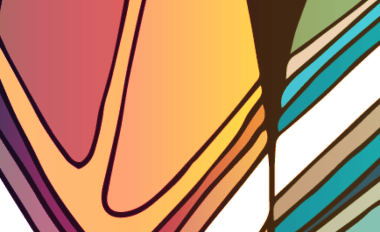Our spirit cannot rest when our Old People’s remains are not in place. By repatriating their remains to rest, we reset time and space to allow their spirit to continue its journey.
Since colonisation there has been large scale – public and private – theft of Ancestral Remains and ceremonial objects from Aboriginal burial grounds.
Museum Victoria (MV) actively acquired Ancestral Remains by conducting archaeological digs and encouraging members of the public to hand Ancestral Remains to the MV. The Murray Black and Berry collections held at the University of Melbourne, included over 1,600 Ancestral Remains, some as old as 14,000 years. The justification for this desecration was "scientific research". It wasn’t until the 1980s that the Archaeological and Aboriginal Relics Act 1972 (Vic) made the possession or display of Ancestral Remains by institutions an offence. Though entirely too belated, this measure at least provided a foundation for further advocacy for repatriation of Ancestral Remains. In 1985, 38 Ancestors from across Victoria were reburied in Kings Domain, Melbourne.56
These portrayals [of sacred objects for "educational purposes"] are nothing, but ongoing colonial propaganda designed to justify the theft and detention of our objects and Ancestors.
The UN Declaration sets clear standards in relation to respect for Indigenous Peoples ceremonial objects and human remains. Indigenous Peoples have the right to use and control their ceremonial objects and to the repatriation of their Ancestral Remains.57
In Victoria, the AHA oversees the repatriation of the Ancestral Remains of Aboriginal Victorians and the return of Secret or Sacred Objects. Under the AHA, any person is obligated to notify the VAHC if they are in possession of human remains that they have reason to believe are Aboriginal Ancestral Remains. Similarly, if a person comes into possession of Secret or Sacred Objects after 2016, they must notify the VAHC. In particular, any public entities (such as museums) or universities were obligated to notify the VAHC if they were in possession of Ancestral Remains, within two years of the rule’s introduction in 2016. At this point in time, all public entities and universities should have already performed this obligation.
Given that the obligations in relation to Secret or Sacred Objects are slightly less stringent than those for Ancestral Remains – the obligation only applies if the person comes into the possession of the objects after 2016 – there are additional provisions relating to public institutions and universities in possession of Secret or Sacred Objects. In the case of universities, museums, or other institutions, if an Aboriginal person with an ownership claim over a Secret or Sacred Object requests the repatriation of that object, the institution must comply by repatriating the objects to the Traditional Owners directly or transferring the object to the possession of the VAHC. Following a 2016 amendment, an ‘ownership claim’ is established if a person is a Traditional Owner of an area in which the object is reasonably believed to have originated.
The VAHC then has the responsibility of arranging for the repatriation of Ancestral Remains and Secret or Sacred Objects to the Traditional Owners or RAP, as the representative Traditional Owner body, determined to be the owners of the Ancestral Remains or Secret or Sacred Objects and are willing to take custody of the Ancestral Remains or objects. All unprovenanced Ancestral Remains or Ancestral Remains and Secret or Sacred Objects that are yet to be returned to the RAP or the appropriate Traditional Owners are managed by the Council.
Heavy fines follow the infringement of any of these legal obligations.
These provisions of the AHA go a long way to meeting the standards of UN Declaration. In additional to meeting the standards under Article 12, this model of repatriation follows Articles 3 and 4 (the rights of self-determination and self-government in relation to Aboriginal internal affairs) because the oversight and repatriation activities are managed by the VAHC, a statutory body representing Aboriginal Victorians.
However, there remain limitations to the AHA. In particular, the AHA does not apply interstate or internationally meaning it does not apply to any Ancestral Remains or ceremonial objects transferred interstate, or overseas (for example to UK institutions).
Beyond repatriation of Ancestral Remains, protection and management of traditional Aboriginal burial places is also a concern. Many burial places are at risk from human activity and environmental damage. Traditional Owners are reluctant to reveal the location of these burial places to authorities and the VAHC has noted a lack of financial resources to support long-term strategies.58
Discussion question: How can Aboriginal peoples be further empowered to manage the care of their Ancestral Remains and ceremonial objects?
- What, if anything, can be done to improve co-ordination of the management and return of Ancestral Remains and ceremonial objects?
- What measures do you believe would help to develop understanding of the importance of Ancestral Remains across the whole Victorian community?
Updated

